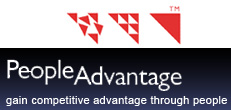Many organisations forget the people management fundamentals when struggling to attract and retain talented people.
Here is a framework to help organisations build the fundamentals to attract and retain talented people.
{ Organisation
{ People
{ Role design
1. Organisation:
{ Ensure clear linkages exist between Business/Organisational Strategic objectives to people strategies (clear line of sight)
{ Ensure competencies are clearly mapped for each organisation level across the organisation
{ Ensure consistency with organisation operational requirements
{ Ensure appropriate organisation structures
{ Identify and eliminate negative cultural factors that adversely impact on the psychological well being of people
{ Ensure leadership and people systems are in place that support your talent and succession management strategy
Eliminate Negative Cultural Factors
Talented people will not tolerate negative cultures. Common negative culture factors include:
{ Blaming
{ Silos
{ Over-control
{ Bullying
{ Lack of recognition
{ Avoidance of responsibility
{ Intra-organisation competitiveness
2. People:
{ Identify the critical factors that clearly characterise high performance
{ Understand how to identify and assess talented people at the organisation and individual competency levels, and at the personality and temperament levels
{ Understand how to determine the readiness of people to progress to the next career level – and how long and what type of development is needed before people can progress
{ Avoid and/or remove dysfunctional and destructive people
{ Ensure reward and recognition strategies, policies and processes support achievement
Leadership and People Systems
Talented people demand effective leadership including:
{ Trust building
{ Acting with integrity
{ Inspiring others
{ Encouraging innovative thinking
{ Coaching
Identify High Performance
Talented people seek opportunities for high achievement:
{ Communicate what and how they need to achieve outcomes
{ Ensure competencies are meaningful – complexity levels of work
How to Identify and Assess Talent
Factors and activities include:
{ Know how the complexity of work changes at each organisation level.
{ Focus on the complexity of the work rather than the specific function to be performed.
{ Understand the key personality and temperament factors that contribute to high performance;
{ Psychological resources required for success change as roles increase in complexity
3. Role Design:
{ Design roles that enable people to focus on critical performance factors that enhance their recognition and development
{ Ensure role description documentation provides for an evaluation of people’s Organisation Citizenship Behaviours (OCBs)
The Need for Competencies
Talented people want to know what is expected of them:
{ Core competencies and performance
{ Functional competencies and performance
Map competencies across the organisation – paint the picture
Summary
Management fads come and go. Effective talent management is about establishing tried, tested and proven people frameworks, policies and processes. Forget focusing on yard work. Be strategic.
© PeopleAdvantage Pty Limited 2008 All Rights Reserved
.

